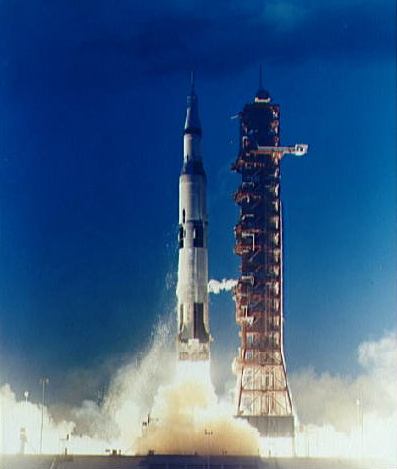Forty years ago today — December 7, 1972 — Apollo 17 lifted off aboard a Saturn V rocket out of Cape Canaveral as the last Apollo lunar mission.

(Gene Cernan, the most recent man to walk on the Moon. NASA image.)
Astronauts Eugene A. Cernan, Ronald E. Evans, and Harrison H. Schmitt comprised the Apollo 17 crew. On their first day in space, the crew took the iconic “Blue Marble” photograph with a hand-held Hasselblad camera.
Cernan and Schmitt landed the Lunar Module “Challenger” in the Taurus-Littrow region of the Moon on December 11. Evans stayed in lunar orbit aboard the Command and Service Module “America.”
Apollo 17 focused on surveying surface features and sampling geological materials in a region selected because it would yield both older and younger samples than previous Apollo missions, and featured Schmitt as the first scientist to land on the Moon. Schmitt and Cernan drove the lunar rover a total of 30.5 kilometers during their 75-hour stay on the Moon, and collected 110.4 kilograms (243 pounds) of lunar material.
When Cernan climbed aboard the Lunar Module to depart the moon, he said, “We leave as we came and God willing as we shall return, with peace and hope for all mankind.”* Usually he is referred to as the last man to walk on the Moon, but I prefer to think of him as the most recent man to walk on the Moon.
And even though I won’t get to be the next person to walk on the Moon, I hope someday to see another person walk on the Moon, and Mars, and even other worlds.
___
*Shameless plug: I made that sentiment a key part of my short story, “Memorial at Copernicus.”















